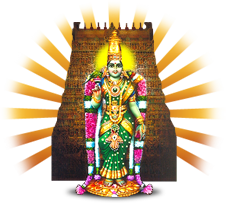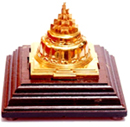|
|

ASTROLOGY OR JYOTHISHAM
- Indian astrology is one of the Vedangas, i.e., limb or branch of Vedas, and dates back to the Vedic period. Several of the Poojas and remedial measures prescribed in the Indian astrology are as per the Vedic system. Hence, it is called Vedic astrology. The Vedangas are mentioned in the Upanishads.
- The most popularly followed astrological classics today are the ones written by Rishis like Parashara, Varahamihira, Garga, Jaimini and their followers and have been translated into all of our regional languages by eminent authors. People in those days had no satellites or telescopes and yet the planetary positions and their motions recorded by them are as accurate as the planetary positions and degrees recorded today using the space satellites. Our ancient astrologers used their divine intuition to record these planetary movements and their effects on us.
- Astrology has a twofold purpose. On one hand it is used as a tool to select the Muhurtha- right month, the right date and the right time to start various auspicious rites and rituals so that the results are better.
- On the other hand it is used as a guide to study the destiny of an individual .Indian astrology is based on the theory of fate. The good and the bad actions of the past life determine your fate or Karma of your present life, and the actions of your present life determine your future Karma. According to Indian astrology a person is born at that place, on that day and on that moment when his individual fate is in perfect mathematical harmony with the progress of the stars in heaven. However it does not preach total dependence on fate. Astrology lets you know what you were born with, what your possibilities are, the limitations, your strong points and your drawbacks. What type of life partners and professions suit you and to expect is also indicated. It also prescribes various remedial measures to ward off the bad effects and to enhance the good results. Astrology is your roadmap of destiny. However your fate is in your hands. The scriptures guide us by telling us what is good and what is bad; what to do and what not to do; how to do and how not to do. You are given a piece of land and the seeds to sow. How much effort to put in to it, what amount of manure and water to add and when how to reap the produce is your job. After that it is you who have to act using your knowledge intelligence, discrimination and experience. Fate is like a game of cards where you cannot help the cards that have been dealt to you but how to play them is in your hands. You may get good cards but if you play badly you will lose and you may get bad cards and still may win if you play carefully. Don't blame the roadmap if you get drunk, drive badly and have an accident! In the Mahabharata Lord Krishna gave advise to Arjuna and also to Duryodhana. One listened and the other did not!
- Astrology has four systems.
- Firstly, we have the divisional chart system, called the Varga system. Based on the planetary degrees at the time of birth, sixteen divisional charts are prepared, by dividing the degrees of the planets. These divisional charts are studied to ascertain the strength and weakness of planets and houses and also to study various aspects of one's life. For example, one-ninth division called Navamsa to study spouse and married life, one-tenth division to study profession, one-seventh for children and so on. The last Varga, called Shodashamsa, is prepared by dividing the planet's degrees in to one-sixtieth part!
- Secondly is the dasa system. Based on one's moon's degrees at birth, we calculate the Dasas, or the ruling periods of various planets, which keeps changing during one's life. It is not just one planets dasa but Maha dasa, or main dasa, of a planet, Antardasa, or sub period, of another planet and so on till we arrive at a fifth level dasa to study each day.
- Thirdly is the Gochara, or transit of planets. Planets transiting various houses produce various results. But a planet transits a sign for quite some time. For example Saturn transits a sign for two and half years. During this entire period its results cannot be totally good or bad. Vedic astrology further pinpoints its good and bad periods even during its transit in one sign. We have the Asthakavarga and Prastharasthakavarga system, which divides a planets transit in a sign into eight parts and shows which part is good and which part is bad.
- Lastly, there is the Prasna Kundali system, or chart cast based on the time of the query. This is studied as an add-on chart to give predictions.
- The modern scientists do not accept astrology. But it is a known fact that planets do have their effects on us. The doctors of almost all mental asylums accept the fact that during the full moon and the new Moon periods the mental patients behave erratically. The police record the same effects on many criminals. The modern scientists know some of the effects of the ultraviolet rays, gamma rays and beta rays of the planets. But unfortunately they don't have the divine wisdom of our ancient is to know all the effects fully.
- I consider that every astrologer is to show a leading light to the individual and to motivate him which I do with God's grace and Guru's blessings and hence this website.




